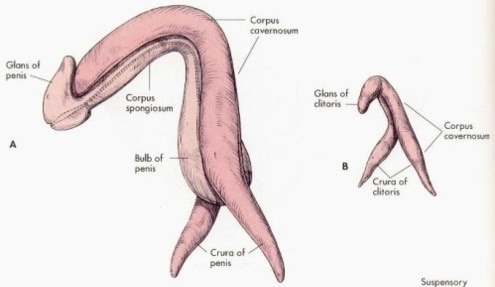Cliteracy Education

ASK FOR WHAT YOU DESIRE – SHOW YOUR PARTNER THE WAY!
Ahhhh To become CLITERATE! If men and women only knew the magic of the Clitoris VS the Vagina… Here is a great start to owning your own pleasure and teaching your partner how you enjoy your sexual touch.
Today, nothing should be revolutionary or subversive about ladies’ lady parts. But ask most women, let alone men, about that cute little button scientists call the clitoris, and you’re likely to hear ridiculous references to things like “flicking the bean” or inaccurate male-centric comparisons to penises (only “smaller”). In reality, that so-called little bean is just the tip of the iceberg.
Increasing knowledge about the clitoris isn’t just some nerdy feminist endeavor; it’s a crucial cog in the pursuit for women’s equality. We live in a world where women’s bodies are constantly hyper-sexualized and objectified, yet 1 in 3 women have trouble reaching orgasm. This isn’t a biological problem. It’s a cultural, and thus psychological, problem. Though Millennials are often berated for being too sexually liberal (“gasp — hookup culture!”), we need to challenge ourselves to be even more sexually adventurous and open-minded.
So, in the hopes of helping us all become more cliterate (myself included), here are 21 things you probably didn’t know about the female sex organ.

- Clits Just Wanna Have Fun!
The clitoris is the only human organ that exists solely for pleasure(unlike the penis, which has a reproductive purpose).
- They Get Hard.
The clitoris is made up of erectile tissue that becomes erect during sexual stimulation and relaxed after orgasm.
- They Can Go It Alone.
50-75% of women reach the big “O” through clitoral stimulation, with or without the addition of vaginal intercourse.
- They’re Like Fine Wine.
Not only does the clitoris never deteriorate, but it actually gets bigger with age! At the end of puberty, a girl’s clitoris has nearly doubled in size. By the time a woman is 32 years old, her clitoris is almost four times larger than it was at puberty. And it just keeps growing. After menopause, the clitoris is about seven times larger than it was at birth! This might be why so many older women report having hot sex.
- They Have Multiple Erogenous Zones.
Besides the tip of the clitoris (or C-spot), a woman has three other erogenous zones inside and around the vagina that connect with and stimulate the clitoris. These include the infamous G-spot and the lesser known A and U-spots (I’ll leave to you to figure out which is which).
- The Ancients Knew How to Appreciate Them.
Chinese Taoists sexplorers fondly nicknamed the G-spot the “black pearl.”
- Pandas Have Them Too!
Clitorises are present in all female mammals (and almost exclusively found in the class Mammalia). The largest clitoris on record belongs to the hyenawho gives birth, urinates, and orgasm all via the clit!
- They’re Just the Tip of the Iceberg.
Most (about three-fourths) of the clitoris is hidden from sight; the majority of is actually internal.
- They’re Much Bigger Than You Think.
The clitoris is much larger than you think! On average, the female sex organ is 3.5 to 5 inches long and 2.5 inches wide.
- … But Their Size Doesn’t Matter.
A woman’s ability to orgasm (and its intensity) has nothing to do with the shape, size, or color her clit.
- They’re Not a “Bean.”
The external part of the clitoris that we see (the “bean,” as its frequently called) is actually referred to as the glans. This part of the clitoris has over 8,000 nerve endings on it — twice as many as that of the average penis.
- Freud Was Wrong About Them.
The 8,000 nerve endings on the glans communicate with and connect to a network of 15,000 more that service the entire pelvic region. This means that, contrary to Sigmund Freud’s theory that clitoral orgasms are inferior to their vaginal counterparts — technically all orgasms are clitoral, even “vaginal” ones.
- They Hug You (Below the Surface)
The rest of the clitoris is internal and connected to the glans by an internal shaft known as the corpora cavernosum. The corpora cavernosum is made up of a pair of spongy erectile tissue structures that, when erect, wrap around and squeezes on the sides of the vagina like they’re giving it a hug. Awwwww!
- They’re Great for Making Wishes.
From there, the corpora cavernosum extends further and branches off into two wings known as the crura (“crus” singular), creating a wishbone-like structure. When stimulated, these “wings” fill with blood and go from pointing towards the hips to stretching straight back towards the spine.
- They’re All About a Great Escape.
Underneath the crura on either side of the vaginal opening are the clitoral vestibules, also known as the vestibular bulbs. These sac-like erectile tissue structures lie internally just beneath the labia majora. Like the corpora cavernosa, they too become engorged with blood during arousal; this cuffs the vaginal opening, increases tightness, and pushes the vulva outward. The blood becomes trapped, causing erection of the clitoris. Upon orgasm the blood is released into the circulatory system by orgasmic spasms.
- They’ve Been Lost – and Found – Many Times.
The clitoris has been being “discovered” and “lost” for centuries. In 1559, Italian anatomist Realdo Colombo claimed to have discovered the clitoris. It was then “rediscovered” by Kinsey in the 1950s and Masters and Johnson in the 1960s, who recognized its importance in helping women achieve orgasm (much to the surprise of women everywhere).
- Their Complete Anatomy Wasn’t Revealed Until the Late 90s.
It wasn’t until a 1998, when Australian urologist Helen O’Connell conducted MRI studies on female volunteers, that the complete anatomy of the female clitoris was understood and seen!
- You Can Now See Them In 3D.
Less than four years ago, French researchers Dr. Odile Buisson and Dr. Pierre Foldès created the first complete 3-D sonography of the stimulated clitoris with little funding.
- Academia Was (and Is) Clueless About Them.
Most textbooks, especially those published pre-1998, have been severly lacking accurate representations of the clitoris – opting instead to illustrate it as only its glans (external part). In reality, the volume of clitoral erectile tissue is ten times greater than that which has been frequently shown in doctors’ offices and in anatomy text books.
- Pornography Gets Them Totally Wrong.
The majority of pornography portrays clitoral action as only a means of foreplay or an afterthought, rather than the primary way to achieve female orgasm and an integral part of intercourse.
- They Help Women Come Quick!
Contrary to popular belief, women do actually not take longer to orgasm than men (when you know what you’re doing, that is). The majority of the women in Kinsey’s study came via masturbation within four minutes — a similar time to that of the men he studied.
Jessica Schreindl is a TV producer in Seattle, Washington. She graduated with her M.A. from Syracuse University where she studied film history and documentary filmmaking. Born and raised in the great Northwest, she has worn the hat of a journalist, photographer and bartender. Her favorite topics to write about are foreign policy, feminism, gender inequality, corporate power, human rights and civil liberties.





Add A Comment